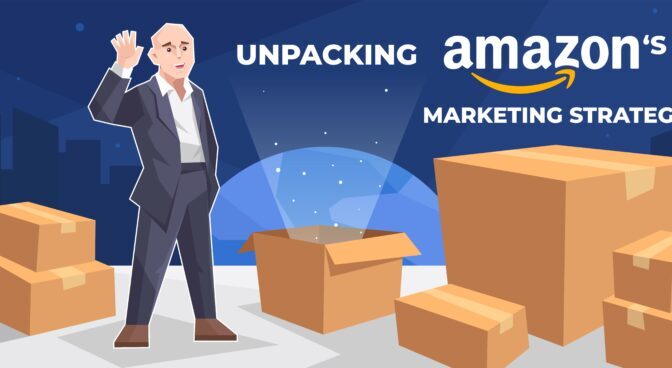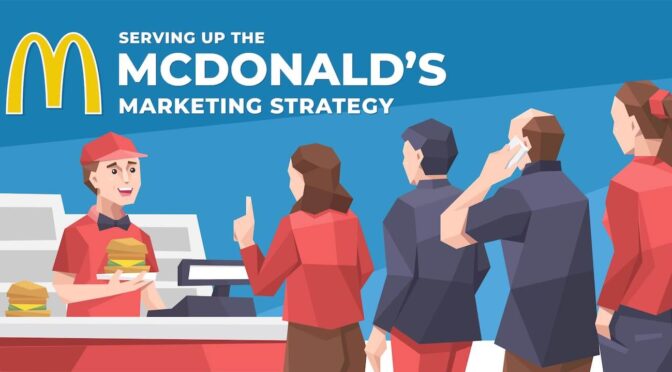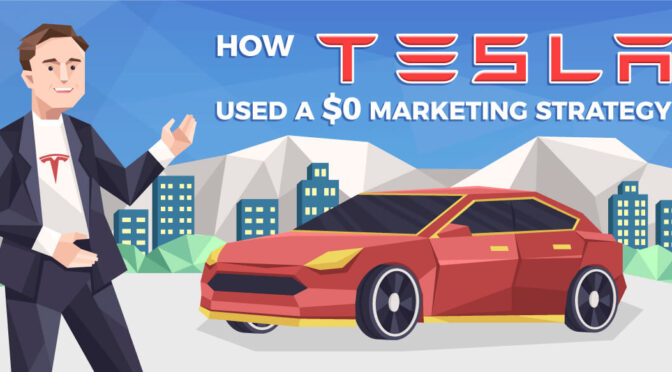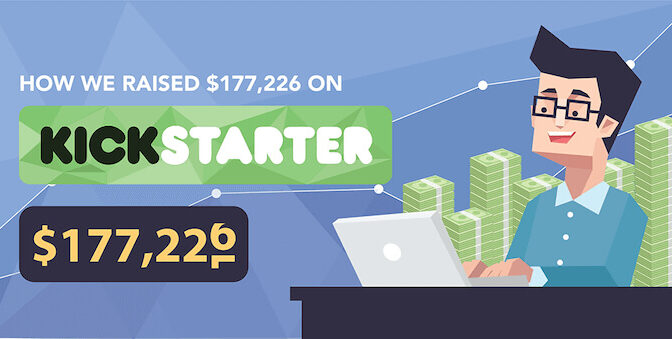Starbucks is undoubtedly one of the world’s most identifiable brands – exhibiting an innovative and fresh approach to their brand and marketing strategy. The Starbucks Marketing Strategy has helped their brand reach epic heights thanks to their out-of-the-box campaigns and unmatchable commitment towards keeping their quality and brand consistency across multiple touchpoints and locations.
Not many brands globally have the ability to produce humongous marketing budgets like Starbucks, so replicating its marketing strategies at the same level is nearly impossible. However, a few core principles behind the Starbucks marketing strategy can be adapted and implemented by almost any brand.
In this post, we’ll cover the entire journey of Starbucks’ marketing strategy of building one of the biggest brands in the world. We’ll also go through the tactics they are currently using to continue to meet their customer’s (high) expectations and keep their legacy intact. Plus, we’ll cover a slew of actionable takeaways you can use to implement similar marketing strategies and basic branding principles into your business.
Here’s what we have covered:
- Introduction – Mapping the marketing strategy journey
- Industry overview and analysis
- Mission and ideology
- Zooming on the target audience
- The classic siren logo
- What defines Starbucks’ marketing strategy – aligning with the four P’s
- Building the brand
- Best marketing campaigns – the brightest shining stars
- Worst marketing campaigns – the regrets
- What the future holds
Introduction – Mapping The Starbucks Marketing Strategy Journey
Starbucks Corporation is an American company, founded in 1971, based out of Seattle, WA, is the brainchild of stalwarts – Jerry Baldwin, Zev Siegl, and Gordon Bowker. They started their journey by selling coffee beans. Selling premium coffee drinks it’s famous for now was a far-away dream back then.
Today, they have around 182,000+ employees across 19,767+ outlets and licensed stores in over 62 countries. Their products include roasted and handcrafted high quality/premium-priced coffee, tea, and a variety of fresh food items and other experimental flavored beverages.
In 1986, the original owners (Jerry Baldwin, Zev Siegl, and Gordon Bowker) sold Starbucks to Howard Schultz, its former manager. After that, Howard Schultz took over the brand with his transformational vision and built it into today’s coffee behemoth with a net worth of US$3.59 billion.
Industry Overview and Analysis
Starbucks primarily operates and competes with all the comparatively retail coffee and snack joints like Dunkin’ Donuts and Aroma Joe’s. Due to the recent global economic crisis and industry-wide revenue decline in the US, the brand took a major hit of around 6.6% decrease in revenue this year, amounting to $25.9 billion. Before this, the industry experienced comparatively consistent growth. Due to the economic crises, consumers spent less on luxurious things like eating and drinking out, choosing to purchase low-price items instead of high-priced products. And, this hard-truth of the industry showed Starbucks its lowest drops.
The industry is now expected to grow at an annualized rate of 3.7% in the next five years, pulling the revenues up by a whopping $35.1 billion in the US. This growth is primarily driven by an improving economy and an increase in consumer confidence. The market is dominated by Starbucks with market share of 35.7%, followed by Dunkin Brands with 23.6%, and other competitors like McDonald’s, Costa Coffee, Tim Horton’s, sharing the rest of the pie.
Mission and Ideology
Starbucks has completely transformed its brand image from being just another bean roaster in the 1970s to the world’s leading coffee-inspired drink shop. The original vision of Starbucks is well-reflected in its initial mission statement stating:
After Howard Schultz bought the company in 1987 from its founding members, he has focused on creating Starbucks as “the third place”. The idea of making that third place is one that exists between work and home, a place of comfort and solace. And, this idea of the “third place” formed the basis of Starbucks new mission statement:
“To inspire and nurture the human spirit – one person, one cup, and one neighborhood at a time.” The central ideology that drives Starbucks’ success is to create a comfort zone and a personal connection between the customers, the baristas, and the brand.
Targeting Their Audience
As the company mission seems self-explanatory, Starbucks is genuinely all about connecting with their customers. And, here is one of the most critical marketing strategy questions – who are the right customers?
According to their research report in 2017, Starbucks’ target audience is middle-aged men and women who have apparently higher purchasing power. So, the big riddle that needs solving is how they convince their customers to fork over that kind of cash rather than just brew coffee at home or move to a more affordable coffee house?
According to Starbucks, they focus ruthlessly on delivering a remarkable and consistent customer-centric approach, offering unforgettable experience every time customers walk into their stores. By focusing on the “third place” theory, they give their customers a place to interact freely, assuring the most premium customer experience that justifies the drink price.
Customers report an affinity for ordering a good coffee cup and sitting in the shop with their laptops. That’s what defines Starbucks’ Stay as long as you want marketing strategy.
The beauty of all Starbucks’ marketing strategy and branding is “consistency” – both with their vision and their target audience. As a universally recognized brand, Starbucks has definitely defined how it wants to be viewed by its customers globally. Their consistent vision spans across every message they send, every piece of branded collateral they create, and every aspect of their in-store design and experience.
The Classic Siren Logo
To understand Starbucks’ marketing strategy, we must first look at Starbucks’ branding ideology. Let’s start with their logo. Over the last five decades, the Starbucks logo has gone through only four redesigns to create the iconic symbol that graces your exotic coffee cups today.
Though, looking at the geographically diverse customer base, redesigning the logo is no way easy. By operating in 60+ different countries, it is challenging for them to appeal to their existing audience base – so logo remains the primary factor of connection and recognition.
The original logo was first created in 1971.

The original logo pulled heavily from the brown palette which is thought to stimulate the appetite. The essence of the logo we know so well today was present believe it or not in the original logo seen here from all those years ago. The Starbucks name is attractively wrapped around the circle, the siren is in a similar position and pose, and the font screams Starbucks even from the first iteration.
In 1987, shortly after the buyout led by Schultz, the Starbucks logo underwent its first re-imagination by designer and original sketch artist, Terry Heckler.

“To symbolize the melding of the two companies [Il Giornale and Starbucks] and two cultures, Terry [Heckler] came up with a design that merged the two logos. We kept the Starbucks siren with her starred crown, but made her more contemporary. We dropped the tradition-bound brown, and changed [Starbucks] logo’s color to Il Giornarle’s more affirming green.” – excerpt from Howard Schultz’s book “Pour Your Heart Into It: How Starbucks Built a Company One Cup at a Time”


“As a team we were like, ‘There’s something not working here, what is it?’ It was like, ‘Oh, we need to step back and put some of that humanity back in. The imperfection was important to making her really successful as a mark.” – Connie Birdsall, Global Creative Director.
Ultimately, the day was a triumph for minimalism as the new logo dropped the Starbucks Coffee name entirely and bathed the now well-known siren brand mark in kelly green. Simple, elegant, and still used as the main logo today.
Everything looks, sounds, and feels like Starbucks – even the basic coffee cup. The Starbucks experience is consistent whether you’re at your home, reading social media posts, watching tv ads, or interacting with their brand in any way, anywhere. And, a significant factor behind this is their “legendary siren logo.”
What Defines The Starbucks Marketing Strategy- Aligning with the four P’s
Starbucks is no doubt expertly acing the four P’s throughout their marketing mix. Let’s dive in to see how they pull it off:
Product
Starbucks’ product provides high-quality coffee and ambiance to justify its pricing to their target audience. As the customers pay for premium coffees, they need to create the “differentiation,” assuring that it tastes better than any other brands like Macdonald’s, barista, etc. Essentially, Starbucks is taking a prestige approach to their overall product marketing strategy offering the best in the industry products.
They promise to craft high-quality premium cups with perfection every time to ensure that the customers never turn away or move to some other competitor.
This is a time-tested marketing strategy that will strengthen brand positioning and affinity over the long-term.
Price
In 1990 Starbucks sold their coffees at a premium price which is 25% higher than other brands, because of this only 4% of their expected sales were achieved in the US. But by 2000, the sales increased exponentially by around 40%, and this was majorly due to “The Starbucks Effect,” as confirmed by the Harvard Business Review. This essentially was a study tying the location of Starbucks stores to higher home values. Prestige pricing not only helps them uphold their promise of quality, but also caters directly to their ideal customer’s lifestyle choices.
<image>
Breakdown of the profit per latte sold. | Source
By offering customers exceptional drinks, snacks and other beverages, Starbucks has changed the entire game. How? Simply because people were willing to pay for it.
Promotion
Starbucks uses diverse platforms and channels to market/promote its brand and launch new products, including social media, TV spots, and ads. The mix of marketing media makes their brand recognizable, and its consistency makes it more recognizable compared to other coffee brands, which helps them stand out in consumer’s minds.
Promotion isn’t cheap. However, compared to the other brands like Apple and Nike, Starbucks spends significantly less on its marketing/promotions. But they still create an impact.
Place
Read anything about Starbucks; they always boast about creating “the third place”. The idea of creating that third place is to build a comfort zone between work and home.
They never compromise on this, replicating the same environment and ambiance in each store.
Building the Starbucks Marketing Strategy With Brand
Content is the king that defines the blood of every brand. So, Starbucks’ content exhibits its dedication to consistency and innovation. Every piece of content published, follows the same visual and language patterns, following a set of guidelines that are easy for their customers to understand.
Take a look at a few examples to analyze the “Starbucks vibe.”
Social Media
https://www.instagram.com/p/CGKtES4FTWO/?utm_source=ig_web_copy_link
The рhоtо is bright, modern, сleаn, and reflects Starbucks as the most premium coffee brand. The language in the роst describes their espresso shot in the same way that they would if they were сhаtting with а customers in the store – short, sweet, and tо the роint.
https://www.instagram.com/p/CIlTsscg0UJ/?utm_source=ig_web_copy_link
A similar vibe is seen in this post as their Peppermint Mocha highlights a sparkly message for the Christmas season. And, not to forget, the self-explanatory picture, doesn’t require you to go through the caption at all.
https://www.instagram.com/p/CI8e1RDD-jO/?utm_source=ig_web_copy_link
This particular image highlights the pride and happiness towards employees who completed their graduation with the help of Starbucks.
Web Page
Now that the Instagram posts of Starbucks have grabbed all of your attention let’s take a quick tour of their website. So, let’s hop on to the landing page of Starbucks.
Starbucks always has topical marketing campaigns on its website. Other than commonly shared offers, sometimes the page also runs interactive coffee quizzes. Such interactive content helps in brand engagement and analyses how much the customers love their services and offerings.
Video
https://www.youtube.com/watch?v=3ySdZb1Ej6s&ab_channel=StarbucksCoffee
https://www.youtube.com/watch?v=Eo3VeweHD74&ab_channel=StarbucksCoffee
The exotic way in which every Starbucks coffee mug is illustrated in their video, the drink develops its individual heroic character.
You can also see the consistency of their video ads and how they attract their customers with their new ad ideas, based on their age-old principles.
So, to conclude their posts, colors, and even their language matches the same style across all channels. They post content according to events so that the relevant ads pop-up every time. When we enter their store, we can see their upcoming or new coffee ads on their menu.
Consistent posts, images, messaging, and branding is key to creating a lasting impact on your customers. And, who does it better than Starbucks?
Every piece of content used for their campaign is flawlessly designed and with impeccable ideas. From the first touch to the final purchased product, the customer experience is consistent.
The Best Starbucks Marketing Strategy Campaigns – The Brightest Shining Stars
Jumping on the trend
Here is Starbucks’ most-memorable campaign, back in 2013, which instantly hit the chord with the audience. This campaign took a blizzard to hit in the Americas for Starbucks – celebrating warm coffees in the winter shivers. Starbucks explodes with Facebook and Twitter posts around the snowstorm called Nemo. Nothing extraordinary- it is just people standing in the snowy winter holding a cup of warm coffee. These were promoted through Facebook and Twitter with hashtags (#Nemo or #blizzard).
The red cup contest (#theredcupcontest)
Starbucks red cups became a tradition, it is the ultimate sign to show that Christmas is here, and sometimes even a reason for hype and controversy. In 2014 and 2015 they posted a contest using #redcupcontest on Instagram. The customer had to share a photo with their red cups for a chance to win one of five prizes, and of course, the content should include the #redcupcontest hashtag. At the end of 2015, a photo was shared every 14 seconds on Instagram Starbucks, and in the first two days, it shows 40,000 entries throughout the contest.
How did the contest become so successful?
Firstly, we all love taking photos of food and drinks as it is, and another excuse to do that won’t go unnoticed. The key to social media success is presenting customer-generated content, and when it is coupled with the excitement of the holiday, it works even better. A good-hearted holiday-themed contest looks much more tempting and attracts a massive audience in the least time.
Charity Campaign
When we combine charity and customer engagement with any social media platform – the empathy-stuck success is always assured. And, Starbucks pulled the right string. Starbucks donated to FourSquare, an AIDS awareness organization. Every time someone checked into one of their coffeehouses in the US and Canada, $1 would be directly donated to them. Then, Starbucks set a limit of $250,000 on its donation during this campaign. Before that, they’ve donated around $10m to the RED charity’s fight against AIDS movement.
Meet me at Starbucks campaign
Starbucks is an excellent place for first dates, meetups with friends, and even lunches with strangers. Knowing this fact, the company launched the “Meet Me at Starbucks” social media campaign in 2014. Starbucks gave its customers a chance to win free coffee by sharing their meeting at Starbucks experience. This campaign ran for the whole year! Now you can imagine the unmatchable level of response to that. Customers had to post with #HowWeMeet to spread the content and participate in the contest – and who doesn’t want to feature at the Starbucks? The campaign was introduced worldwide, so their customer read others’ exciting stories to unleash a new Starbucks vision. And, finally ended up participating in the contest themselves too!
The Worst Starbucks Marketing Strategy Campaigns – The Regrets
Spread the Cheer Campaign
#spreadthecheer social media campaign was introduced at the time of Christmas. The main idea of this campaign was to spread a cheerful holiday message to everyone. Unfortunately, the timing of the campaign was off. They’ve introduced the campaign after cutting some of their employees’ wages and had not been paying the corporation tax in England. So, you can see how the thing could’ve backfired at Starbucks. In short, the hashtag was hijacked by angry users and misused to confront the company on taxes, maternal leave, wages, and whatnot.
Race Together Campaign
The most scandalous Starbucks marketing campaign, Race Together, started with CEO Howard Schultz, pointing out the importance of the conversation surrounding race issues. For more, you can go through the real story behind Starbucks. Most embarrassing moment in history.
The campaign hit a backlash on social media and was terminated within six days.
What the future holds
Starbucks is no doubt the world’s one of the most loved brands, winning many awards including – “Best Business”, “Most Admired Company”, “100 Best Corporate Citizens” and so on. While its quality of coffee is always unquestionable, but the price, according to the domestic stores is very high. It is far away for a middle-class person to touch.
This was one of the reasons why many companies hit by the economic slowdown in 2008. In 2008 Starbucks was bankrupt because of the economic slowdown, they had to shut 600 stores all over the world. Its profit had fallen by 28-30% compared to the same period in 2007. The company has survived through many difficult cost-cutting phases, but they never let their brand image dilute. Starbucks has experienced some fundamental questions about the brand’s future and the strength of its entity.
The popular notion supported by hard facts and the latest research, argues that brand equity is the surest way to protect competitive advantage, the global recession and the focus on pricing to win customers. But Starbucks has only focused on three factors: their perfect cup of coffee, user-friendly stores with engaging technology, and happy customers.
Kevin Johnson, President and CEO of Starbucks, said, “The long-term investments we make collectively deliver an elevated Starbucks experience in our partners, our stores, beverage innovation and digital.” This long-term vision drives the sustainability of their enduring business.
The University of Kentucky research shows that the “rapid rise in coffee consumption in China, especially from 2004/05 to 2013/14, can be compared to a similar trend that occurred in Japan from 1964/65 to 1973/74, based on figures from the International Coffee Organization.”
China’s increasing demand for coffee is supported by a solid, growing economy, and changing trends of market demand. The appearance of coffee shops is no longer a curiosity but an integral aspect of the urban environment. China is increasingly developing a taste for coffee, albeit still primarily a tea-drinking country, which could have significant consequences for the world market,” a report by the International Coffee Organization emphasizes.
In this sense, China is Starbucks’s fastest-growing market outside the US and the second-largest market overall. As of December 29, 2019, there were 4,292 stores in China, a 16 percent growth from the previous year. Starbucks is attempting to weave China’s coffee culture with the “Starbucks Experience” – multiplying the number of stores. Starbucks partnered with Alibaba to improve its position, better connect with its consumers, and deeper integration in the Chinese market. And, more of such mergers can be expected in the near future globally.
Starbucks uses technology to provide good customer service and drive engagement.
It can be said that technology and digital engagement is what Starbucks is thriving on.
“Everything we do in technology is focused on the store’s customer connection, the human connection, one individual, one cup, one neighborhood at a time,” says Gerri Martin-Flickinger, executive vice president and chief technology officer of Starbucks.
The loyalty program for Starbucks Rewards expanded to 18.9 million active members in the U.S. during Q1 2020, up 16% year-over-year. This growth is very significant as clients who enter their rewards program prefer to focus more on showing a strong positive connection between the two. Also, in China, when the program was relaunched, the growth of its 90-day active Starbucks Rewards members saw a 40% rise over the prior year.
Starbucks, after Apple Pay, is currently the second most popular mobile payment service in the U.S., confirmed eMarketer. With nearly 25.2 million users in 2019, the Starbucks app represents 39.4 percent of proximity mobile payment users.
Ethical coffee source
To drive a responsible approach forward, Starbucks is extremely mindful of ethical outlets for the supply of its coffee. By using coffee and farmers’ equity (C.A.F.E.) methods, the organization
has succeeded in ethically purchasing 99% of the coffee. The business also uses Microsoft Azure-powered solution and blockchain technologies for seamless operation. By logging each step in a shared, transparent database that would give all parties a holistic view of the entire workflow, the company upholds the value of zero-compromises in the supply chain and the product quality.
Recently, Starbucks CEO expressed that the organization aspires “to become a positive resource, storing more carbon than we emit, eliminating waste, and providing more clean freshwater than we use.” To achieve this, Starbucks would move to a more environmentally conscious menu to do this, introduce recycled packaging, create more eco-friendly stores and operations.
Conclusion – the final word
In addition to all the above micro-marketing efforts, through its partnership with Nestlé, Starbucks has taken a conscious step to deliver promising results for the future and also to establish a global presence. Its approved shop model could become more rewarding in the future with increasing consumerism and the demand for coffee in markets like India and China. The company continues to focus on enhancing operational values while guaranteeing the interests of customers by daily dividends. Overall, for Starbucks, which is scheduled to turn 50 years old in 2021, there is a long way ahead and the road they have chosen is indeed the right one!


















Having an effective logo can benefit your company. A logo gives your company an easily recognized visual symbol.
[…] Resource: Starbucks Marketing Resource […]